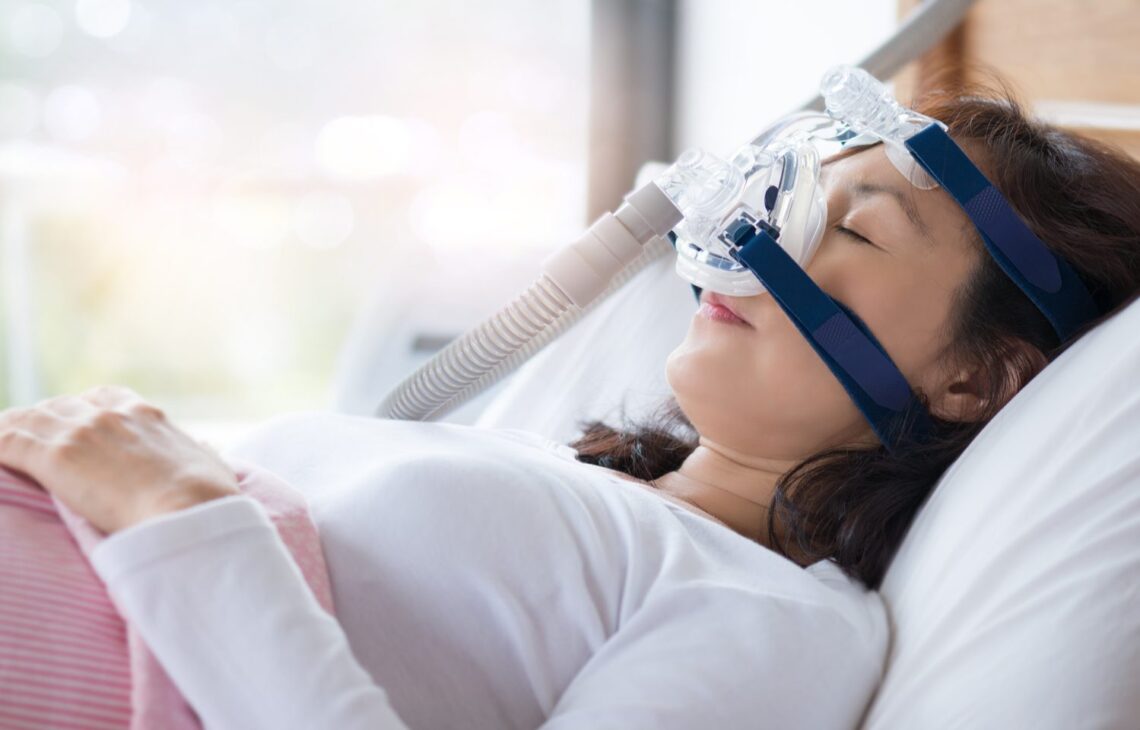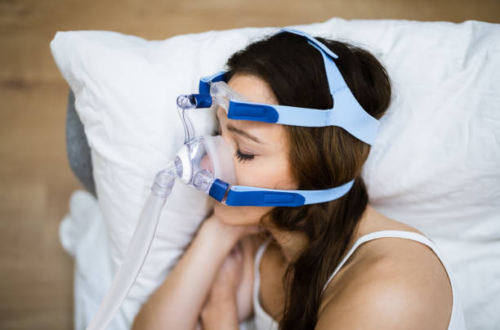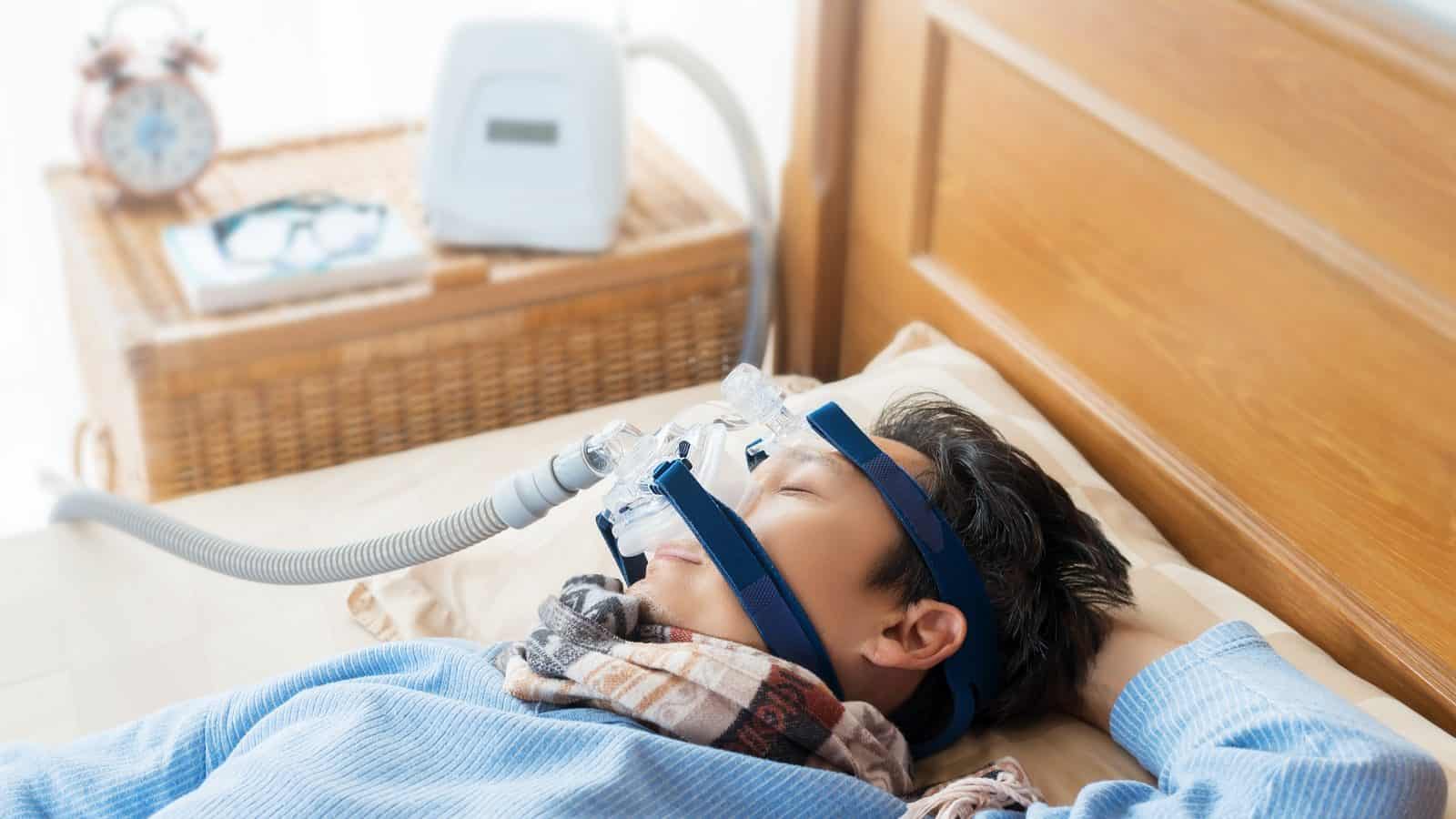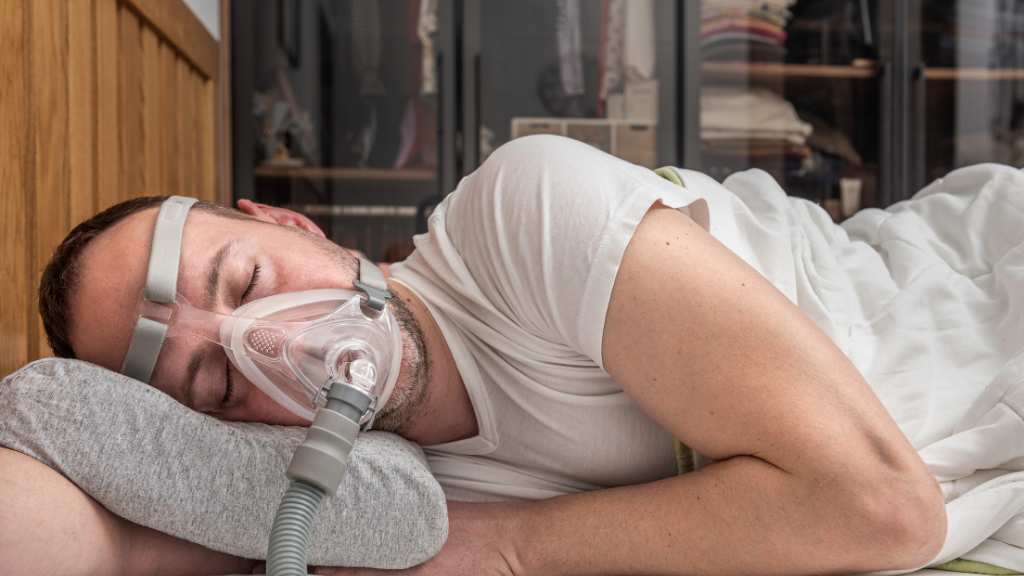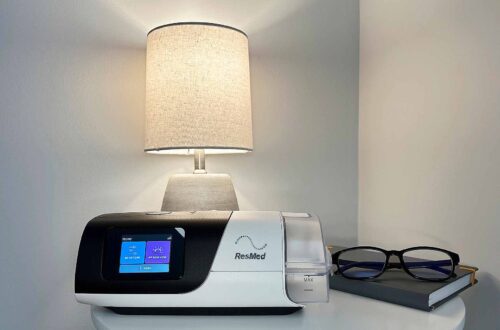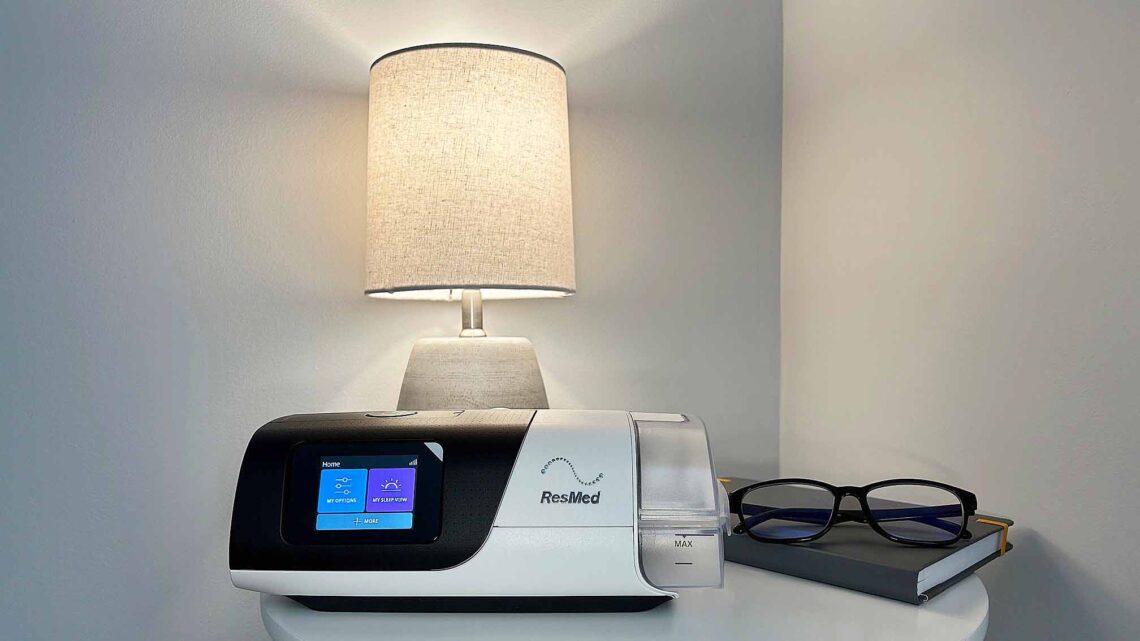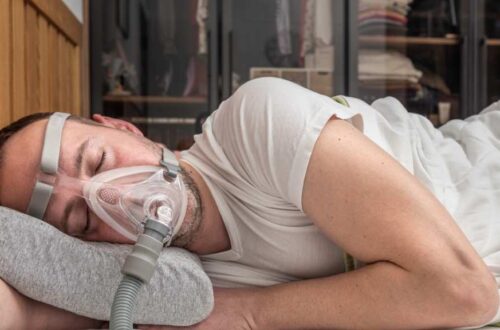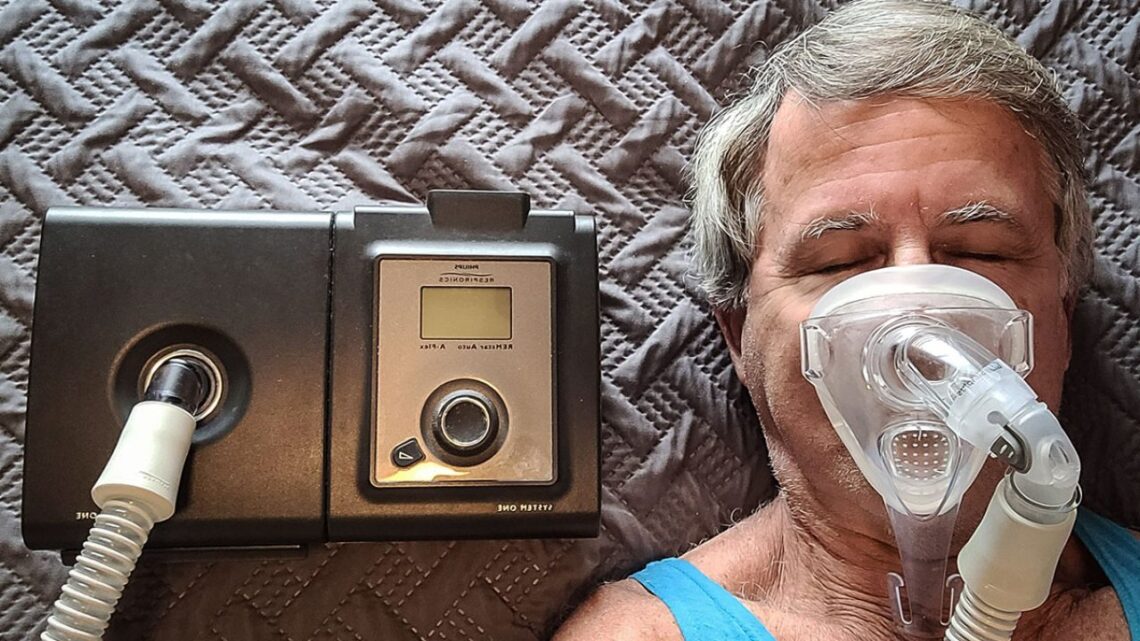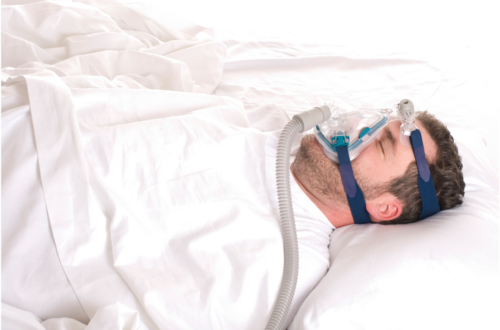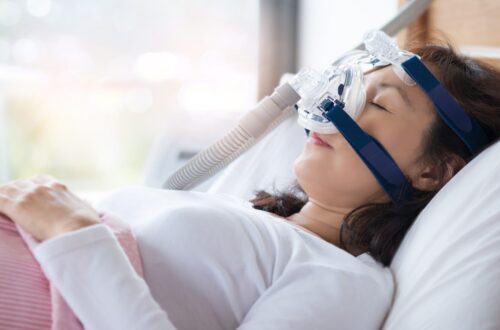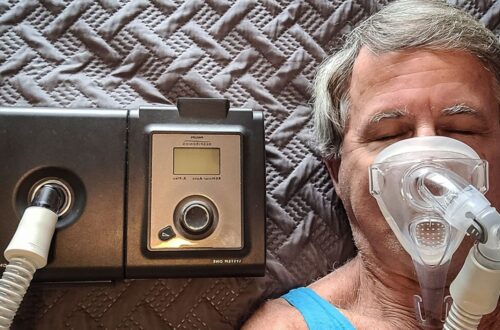CPAP Machines
-
Choosing a CPAP Mask for Your Sleeping Position: Tips and Considerations
Sleep apnea is a common sleep disorder that affects millions of people around the world. One of the most effective treatments for this condition is the use of a CPAP machine, which delivers a continuous stream of air pressure to keep the airways open during sleep. However, in order to experience the full benefits of CPAP therapy, it is important to choose a mask that not only fits well but also suits your sleeping position. In this article, we will explore the various factors to consider when selecting a CPAP mask based on your sleeping position, along with some useful tips and recommendations.
Understanding the Importance of a Properly Fitted CPAP Mask
A properly fitted CPAP mask or sleep study machine is crucial for effective treatment of sleep apnea. A well-fitting mask ensures a secure seal, preventing air leakage and maintaining optimal pressure levels. It also plays a significant role in improving comfort and compliance with therapy. When the mask fits correctly, it reduces the chances of skin irritation, mask shifting, or discomfort, allowing patients to enjoy a good night’s sleep.
Moreover, a properly fitted CPAP mask not only enhances the effectiveness of the treatment but also contributes to overall health and well-being. By ensuring that the air pressure delivered by the CPAP machine remains consistent and uninterrupted, the mask helps prevent serious complications associated with untreated sleep apnea, such as cardiovascular problems, daytime drowsiness, and decreased cognitive function.
The Role of CPAP Masks in Sleep Apnea Treatment
CPAP masks are an integral part of sleep apnea treatment. They work in conjunction with the CPAP machine to deliver pressurized air to the airways, preventing them from collapsing and providing uninterrupted airflow. By maintaining a constant flow of air, CPAP masks ensure that individuals receive adequate oxygen levels throughout the night, helping to alleviate symptoms such as snoring, daytime fatigue, and breathing interruptions.
Furthermore, CPAP masks come in various styles and sizes to cater to different patient preferences and facial shapes. From nasal masks to full-face masks, each type serves a unique purpose in addressing specific sleep apnea symptoms and comfort needs. Consulting with a healthcare provider or a sleep specialist can help individuals determine the most suitable CPAP mask for their condition, ensuring optimal treatment outcomes. Learn more about constant flow of air, visit at https://www.linkedin.com/pulse/balanced-ventilation-constant-flow-air-rate-systems-perestaj.
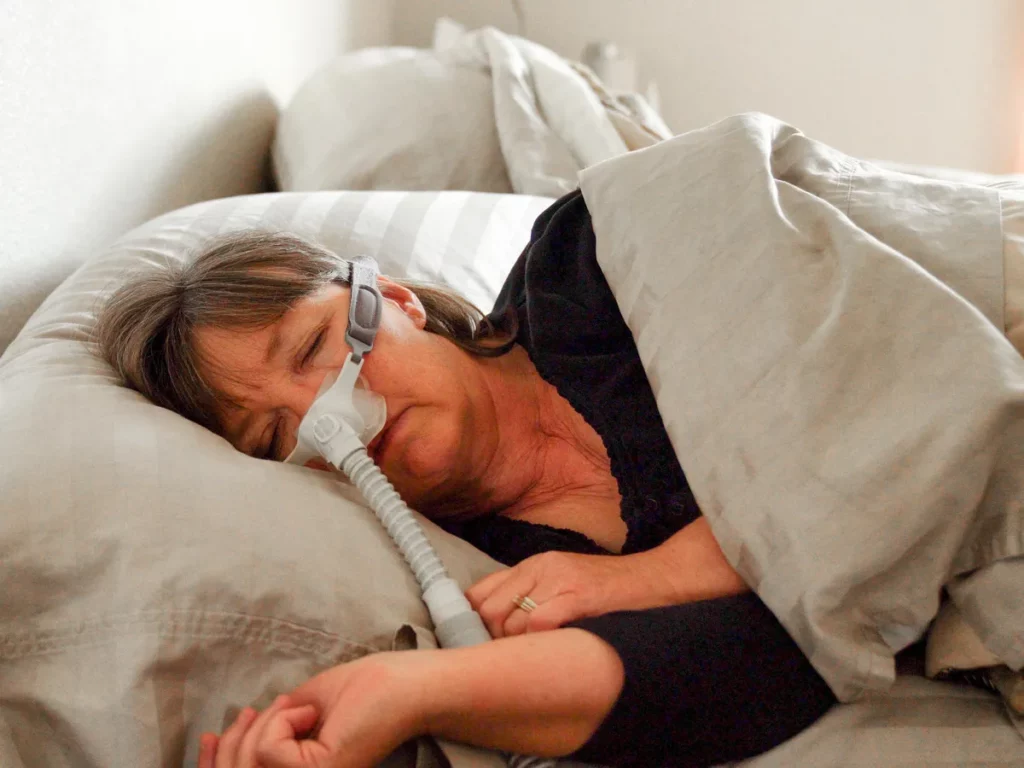
How Your Sleeping Position Affects CPAP Mask Performance
Your sleeping position can significantly impact the performance of your CPAP mask. Different sleeping positions require specific mask designs to provide optimal comfort and effectiveness. Understanding how your preferred sleeping position affects your mask performance can help you make an informed decision when selecting the right CPAP mask.
For instance, individuals who tend to sleep on their back may benefit from a CPAP mask with a lower profile to minimize interference with the pillow, while side sleepers may prefer a mask with a more secure headgear design to prevent shifting during the night. Considering factors such as head movement, facial structure, and comfort preferences can guide you in choosing a CPAP mask that enhances therapy adherence and overall sleep quality. Learn more about facial structure click here.
Different Types of CPAP Masks
CPAP masks come in various styles, each catering to different preferences and needs. Understanding the differences between the various types of masks can help you narrow down your options:
When selecting a CPAP mask, it’s essential to consider factors such as your breathing habits, comfort preferences, and any specific medical conditions you may have. Consulting with a healthcare provider or a CPAP specialist can also provide valuable guidance in choosing the most suitable mask for your individual needs. Learn more about Maximising Comfort: Strategies for Reducing CPAP Mask Discomfort visit at https://supplementsforskinhealth.com/maximising-comfort-strategies-for-reducing-cpap-mask-discomfort/(opens in a new tab)
Full Face Masks
Full face masks cover both the nose and mouth, ensuring that the pressurized air reaches the airways effectively. These masks are ideal for individuals who breathe through their mouth or require higher pressure settings. They provide a secure seal and accommodate movement during sleep, making them a popular choice among many CPAP users.
It’s important to note that full face masks may not be the best option for individuals who feel claustrophobic or prefer a more minimalistic design. However, for those who prioritize maximum airway coverage and stability during sleep, full face masks offer comprehensive respiratory support.
Nasal Masks
Nasal masks cover only the nose and are held in place with straps. They are less intrusive than full face masks and provide a clear field of vision. Nasal masks are suitable for individuals who breathe primarily through their nose and find full face masks uncomfortable.
One advantage of nasal masks is their versatility in accommodating different sleeping positions. Whether you are a side sleeper or prefer sleeping on your back, nasal masks can provide effective therapy without compromising comfort. Additionally, nasal masks are often recommended for individuals who experience nasal congestion or allergies, as they can help maintain airflow through the nostrils.
Nasal Pillow Masks
Nasal pillow masks are the smallest and lightest option available. They feature small inserts that rest just inside the nostrils, offering a clear field of vision and minimal contact with the face. Nasal pillow masks are ideal for individuals who prefer a minimalist design and find other mask types cumbersome.
Despite their compact size, nasal pillow masks provide effective therapy by delivering pressurized air directly into the nostrils. This design is particularly beneficial for individuals who experience skin irritation or pressure sores from traditional CPAP masks. Nasal pillow masks are also a popular choice for frequent travelers due to their compact design and ease of portability.
Factors to Consider When Choosing a CPAP Mask
Selecting the right CPAP mask for your sleeping position involves considering various factors. Here are some key considerations:
Comfort and Fit
Comfort is paramount when choosing a CPAP mask. Look for a mask that feels comfortable against your skin and does not cause any discomfort or pressure points. Ensure that it fits securely and does not shift during the night.
It’s important to note that different types of CPAP masks cater to various preferences. For instance, nasal masks cover only the nose and are ideal for individuals who breathe through their nose while sleeping. Full-face masks cover both the nose and mouth, making them suitable for mouth breathers. Nasal pillow masks are minimalistic and rest at the entrance of the nostrils, providing a less intrusive option for those who prefer a smaller mask.
Mask Size and Adjustment Features
The right mask size is essential for a proper fit. CPAP masks come in different sizes, so it is crucial to find one that suits your facial structure. Additionally, consider masks with adjustable features such as headgear straps and cushion tension to customize the fit according to your preferences.
Moreover, some CPAP masks offer innovative features like magnetic clips for quick assembly, swivel elbows for freedom of movement during sleep, and forehead pads to reduce pressure on the skin. These additional adjustment options can enhance the overall comfort and effectiveness of the mask.
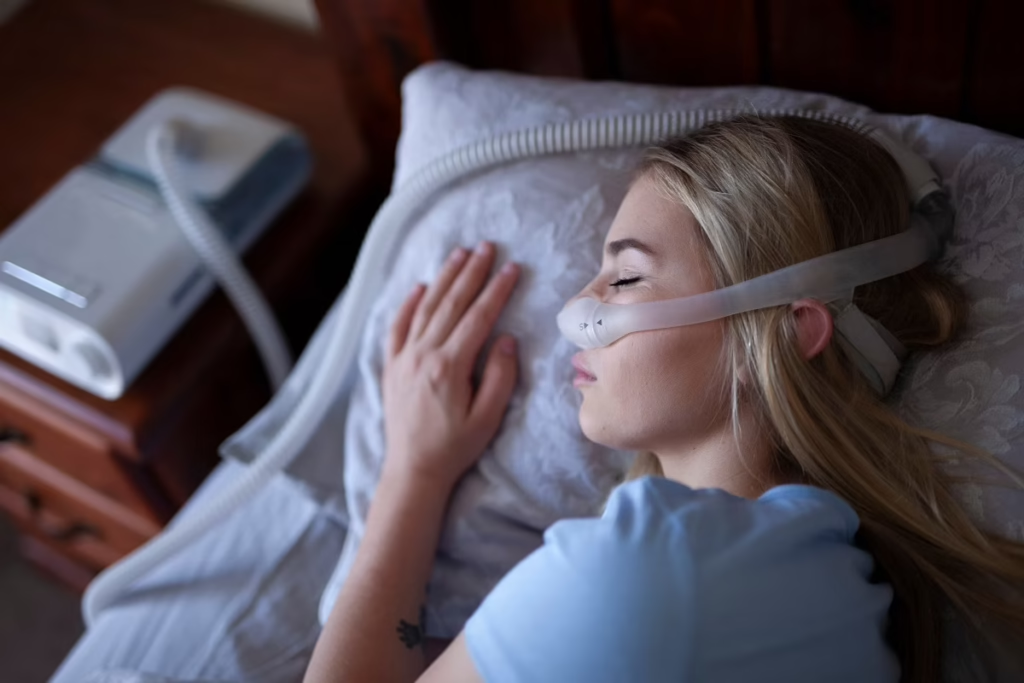
Material and Durability
Consider the material of the mask and its durability. Masks made from high-quality materials tend to be more comfortable and long-lasting. Look for masks that are easy to clean and maintain.
Silicone is a common material used in CPAP masks due to its softness and flexibility, providing a gentle touch on the face. Some masks incorporate memory foam cushions that contour to the face for a personalized fit. When assessing durability, factors such as the mask’s resistance to wear and tear, as well as its ability to maintain a proper seal over time, are crucial for long-term use.
Tips for Side Sleepers
Side sleepers face unique challenges when it comes to finding a suitable CPAP mask. Here are some tips to help side sleepers choose the right mask:
Side sleeping is a common position that can offer numerous health benefits, such as improved digestion and reduced snoring. However, for individuals using a CPAP machine, finding the right mask that accommodates this sleeping position is crucial for a comfortable night’s rest.
Best CPAP Masks for Side Sleepers
Side sleepers can benefit from masks that have a flexible design and allow for movement. Nasal masks and nasal pillow masks are generally well-suited for side sleepers, as they offer a minimal profile and provide freedom of movement.
Nasal masks are designed to fit securely over the nose, providing a seal that prevents air leakage during sleep. On the other hand, nasal pillow masks feature small cushions that seal around the nostrils, offering a lightweight and comfortable option for side sleepers who may feel claustrophobic with traditional masks.
Overcoming Common Challenges for Side Sleepers
Side sleepers may experience issues such as air leakage or pressure points due to the pillow pressing against the mask. To overcome these challenges, side sleepers can try using a pillow specifically designed for CPAP users or adjust their sleeping position slightly to minimize contact between the mask and the pillow.
Additionally, side sleepers can experiment with different mask styles and sizes to find the best fit for their unique needs. It is essential to work closely with a healthcare provider or CPAP supplier to ensure proper mask selection and fitting, ultimately leading to improved comfort and compliance with CPAP therapy.
Advice for Back Sleepers
Back sleepers have their own set of considerations when selecting a CPAP mask. It’s important for back sleepers to choose a mask that not only provides effective airflow but also ensures comfort throughout the night. Proper mask fit is crucial to prevent air leaks and ensure optimal therapy.
When it comes to CPAP masks for back sleepers, there are various options available in the market to cater to different preferences and needs. From full face masks to nasal masks, back sleepers have the flexibility to choose a mask that suits their sleeping style and comfort level.
Top CPAP Masks for Back Sleepers
Back sleepers can opt for full face masks or nasal masks based on personal preference and comfort. Full face masks ensure that air is delivered effectively even if the mouth falls open during sleep, while nasal masks provide a clear field of vision and less facial coverage. Some back sleepers may find nasal pillows to be a comfortable alternative, as they are lightweight and less intrusive.
Addressing Common Issues for Back Sleepers
Back sleepers may experience issues such as air leakage around the mouth or nasal bridge. To address these issues, back sleepers can try adjusting the mask straps or using mask liners or nasal strips to improve the seal. It’s essential for back sleepers to regularly check and maintain their CPAP equipment to ensure optimal performance and comfort.
Conclusion
Choosing the right CPAP mask for your sleeping position is essential for a comfortable and effective night’s sleep. Consider factors such as comfort, fit, mask type, and durability when making your selection. Consult with your sleep specialist or CPAP provider if you have any specific concerns or questions. By choosing a CPAP mask that suits your sleeping position, you can maximize the benefits of sleep apnea treatment and enjoy better sleep quality and overall well-being.
-
Maximising Comfort: Strategies for Reducing CPAP Mask Discomfort
CPAP (Continuous Positive Airway Pressure) therapy remains one of the most effective treatments for sleep apnea. However, for some individuals, discomfort caused by the CPAP mask can hinder their ability to embrace this potentially life-changing therapy. In this article, we will delve into the world of CPAP mask discomfort and discuss strategies to minimize it, paving the way for a restful night’s sleep and improved overall well-being.
Understanding CPAP Mask Discomfort
Before we delve into the strategies to alleviate CPAP mask discomfort, it is crucial to have a comprehensive understanding of the pivotal role that CPAP masks play in the cpap sleep study. These masks serve as a vital component in the therapy by delivering a continuous flow of pressurized air into the airways, thereby preventing them from collapsing during sleep. This continuous airflow helps in maintaining open airways, reducing breathing pauses, and eliminating snoring, ultimately enabling individuals to experience uninterrupted and restful sleep.
Furthermore, it is essential to acknowledge that the effectiveness of CPAP therapy in managing sleep apnea is heavily reliant on the comfort and fit of the CPAP mask. Addressing any discomfort or issues related to the mask is paramount in ensuring optimal adherence to the treatment regimen.
The Role of CPAP Masks in Sleep Apnea Treatment
Acting as the crucial link between the user and the CPAP machine, a CPAP mask plays a pivotal role in facilitating the delivery of pressurized air to the airways. It is imperative to select a well-fitting mask that establishes a secure seal to prevent any air leakage, ensuring the efficacy of the therapy.
Common Issues and Complaints with CPAP Masks
Among the array of challenges that CPAP mask users may encounter, discomfort stemming from the mask’s pressure on the face, skin irritation, air leakage, noise disturbances, and difficulties in achieving the perfect fit are prevalent. These issues can pose obstacles to the seamless integration of CPAP therapy into one’s nightly routine, underscoring the importance of addressing and mitigating these concerns promptly.
Moreover, understanding the nuances of CPAP mask discomfort and proactively seeking solutions can significantly enhance the overall experience of individuals undergoing sleep apnea treatment with CPAP therapy.
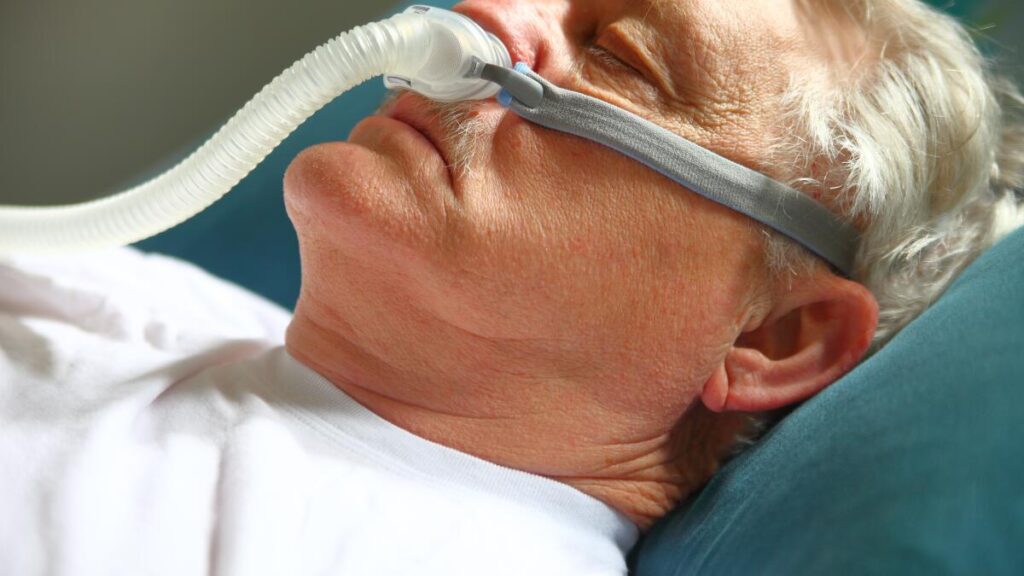
Essential Features for a Comfortable CPAP Mask
When selecting a CPAP mask, certain features can play a crucial role in enhancing comfort and facilitating a pleasant sleep experience. Let us explore some of these key considerations.
Comfort during CPAP therapy is paramount for ensuring a good night’s sleep and overall well-being. In addition to material and design, factors such as headgear adjustability and forehead support can significantly impact comfort levels. Masks with adjustable headgear straps and cushioning around the forehead can help distribute pressure evenly, reducing the risk of discomfort and skin irritation. Learn more about skin irritation click here.
Material and Design Considerations
The choice of material and design of the CPAP mask can greatly impact comfort. Masks are typically made of silicone or softer fabrics that are less likely to cause skin irritation. Additionally, masks with minimal contact points can reduce discomfort and pressure on the face, facilitating a more restful sleep.
Furthermore, the design of the mask plays a crucial role in ensuring a proper seal and minimizing air leaks. Masks with a flexible frame that conforms to facial contours can provide a more secure fit, enhancing comfort and therapy effectiveness.
The Importance of Proper Mask Fit
A properly fitting mask is essential to prevent air leakage and optimize therapy effectiveness. It is recommended to work closely with a healthcare professional to ensure the mask is the right size and properly adjusted. Regular fittings and adjustments may be necessary as facial features change over time.
Moreover, the seal of the mask should be assessed regularly to ensure it remains effective. Factors such as weight fluctuations, changes in facial structure, or wear and tear on the mask can impact the seal, leading to air leaks and reduced therapy efficacy. Monitoring the fit of the mask and replacing worn-out parts can help maintain optimal comfort and treatment outcomes. Learn more about the importance of proper mask fit visit at https://www.cam.ac.uk/research/news/proper-fit-of-face-masks-is-more-important-than-material-study-suggests.
Tips for Reducing CPAP Mask Discomfort
While it may take time to adjust to CPAP therapy, several strategies can help minimize mask discomfort. Let’s explore some of these tips.
One additional tip to reduce CPAP mask discomfort is to ensure that the mask is properly fitted. A well-fitted mask can prevent air leaks and reduce pressure points on the face, leading to a more comfortable experience. It is essential to consult with a healthcare provider or a CPAP equipment supplier to find the right mask size and style that suits your facial structure and sleeping habits.
Gradual Adjustment to CPAP Therapy
Introducing CPAP therapy gradually can aid in acclimatizing to the mask and the sensation of pressurized air. Starting with shorter usage periods and gradually increasing the duration can make the transition more comfortable.
Moreover, experimenting with different sleeping positions while using the CPAP machine can also help in finding the most comfortable and effective way to wear the mask. Some individuals find sleeping on their back with a pillow supporting their neck and head can improve mask stability and reduce discomfort.
Regular Cleaning and Maintenance of Your CPAP Mask
Maintaining good hygiene by cleaning the mask regularly can help prevent skin irritation and enhance comfort. Following manufacturer guidelines for cleaning and replacing mask components is vital to ensure optimal performance and longevity of the mask.
In addition to regular cleaning, it is recommended to replace the CPAP mask and its components as per the manufacturer’s instructions. Over time, the mask’s cushion, headgear, and filters may wear out, affecting the seal and overall comfort. By replacing these parts timely, you can ensure that your CPAP therapy remains effective and comfortable.
Exploring Alternatives to Traditional CPAP Masks
For individuals who continue to experience discomfort despite trying different masks, exploring alternative options can be beneficial. Let’s consider two popular alternatives: nasal pillows and full face masks. Learn more about Choosing a CPAP Mask for Your Sleeping Position: Tips and Considerations click https://supplementsforskinhealth.com/choosing-a-cpap-mask-for-your-sleeping-position-tips-and-considerations/
Benefits of Nasal Pillows
Nasal pillows consist of two small prongs that are inserted directly into the nostrils. These masks are a good option for individuals who prefer minimal contact with their face and reduced mask interference during sleep. Nasal pillows offer a lightweight and less obstructive alternative to traditional masks.
One key advantage of nasal pillows is their ability to provide a more natural airflow, as they deliver air directly into the nostrils without covering the entire face. This can be particularly beneficial for individuals who feel claustrophobic with full face masks or who experience skin irritation from masks that cover a larger area of the face.
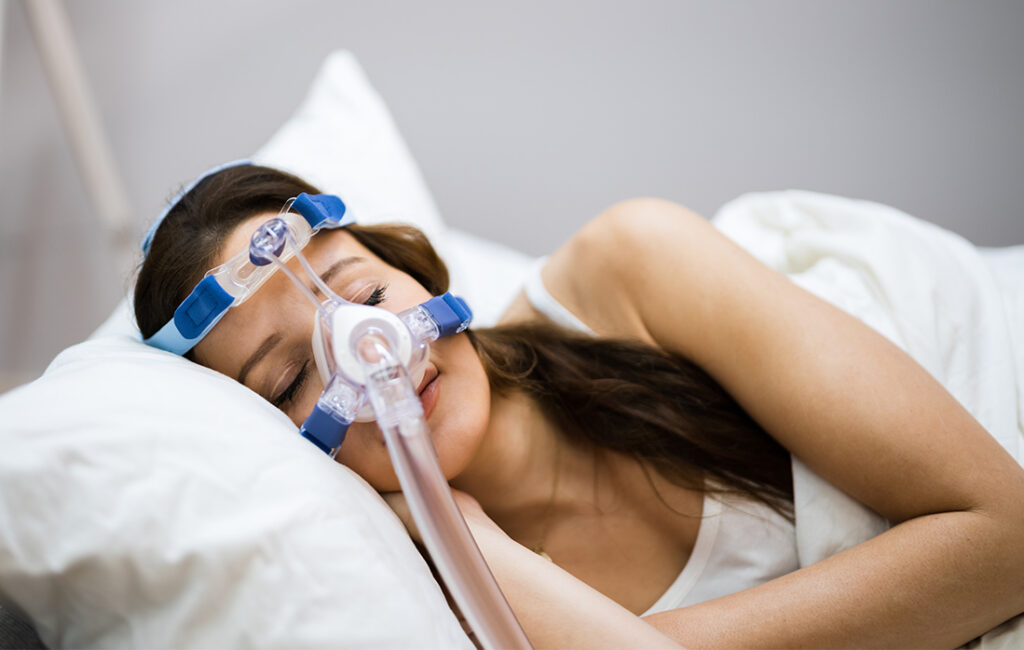
Advantages of Full Face Masks
Full face masks cover both the nose and the mouth, making them suitable for individuals who breathe through their mouths while sleeping or those with nasal congestion. These masks provide a secure fit and ensure effective delivery of pressurized air.
Another benefit of full face masks is their versatility in accommodating different sleeping positions. Whether you sleep on your back, side, or stomach, a full face mask can maintain a consistent seal, preventing air leaks and ensuring optimal therapy throughout the night. Additionally, full face masks are ideal for individuals who require higher pressure settings, as they can distribute the airflow more evenly across a larger surface area.
When to Seek Professional Help
While these strategies can improve comfort for many individuals, there are instances where professional assistance may be required.
Persistent Discomfort Despite Adjustments
If discomfort persists despite adjusting the mask and trying different strategies, it is crucial to consult with a healthcare professional. They can provide further guidance and assess whether there may be underlying issues contributing to the discomfort.
Recognizing and Addressing CPAP Mask Allergies
In some cases, individuals may develop allergies or sensitivities to materials in the mask or cleaning products. If symptoms such as skin redness, itching, or difficulty breathing occur, medical advice should be sought to identify potential allergies and explore alternative mask options.
It’s important to note that CPAP mask discomfort can sometimes be exacerbated by factors such as the fit of the mask, the pressure settings on the machine, or even the sleeping position of the individual. These variables can interact in complex ways, making it challenging to pinpoint the exact cause of discomfort without professional guidance.
Furthermore, individuals with underlying medical conditions such as chronic sinus issues, skin sensitivities, or respiratory disorders may require specialized care when using CPAP therapy. These conditions can impact the effectiveness and comfort of the treatment, underscoring the importance of seeking expert advice to tailor the therapy to individual needs.
-
The Ultimate Guide to CPAP Machines: Choosing the Best for You
CPAP machines are a common treatment option for individuals with sleep apnea. Sleep apnea is a sleep disorder characterized by pauses in breathing during sleep, leading to fragmented sleep and numerous health issues if left untreated. In this guide, we will explore everything you need to know about CPAP machines and how to choose the best one for your needs.
Understanding CPAP Machines
What is a CPAP Machine?
A CPAP (Continuous Positive Airway Pressure) machine is a medical device that delivers a constant stream of pressurized air to the airway to prevent it from collapsing during sleep. It consists of a small air pump, a hose, and a mask or nasal pillows that the user wears over their nose and/or mouth. More accesories detail for CPAP machines may be get on https://store.airliquidehealthcare.com.au/en/cpap-machines
CPAP machines are specifically designed to treat sleep apnea, a common sleep disorder characterized by repeated pauses in breathing during sleep. These pauses, known as apneas, can last for a few seconds to a few minutes and can occur multiple times throughout the night. Sleep apnea can lead to various health problems, including daytime fatigue, high blood pressure, and an increased risk of heart disease.
When a person with sleep apnea uses a CPAP machine, the pressurized air acts as a splint, keeping the airway open and allowing for uninterrupted breathing. This helps to prevent the apneas and improve the quality of sleep.
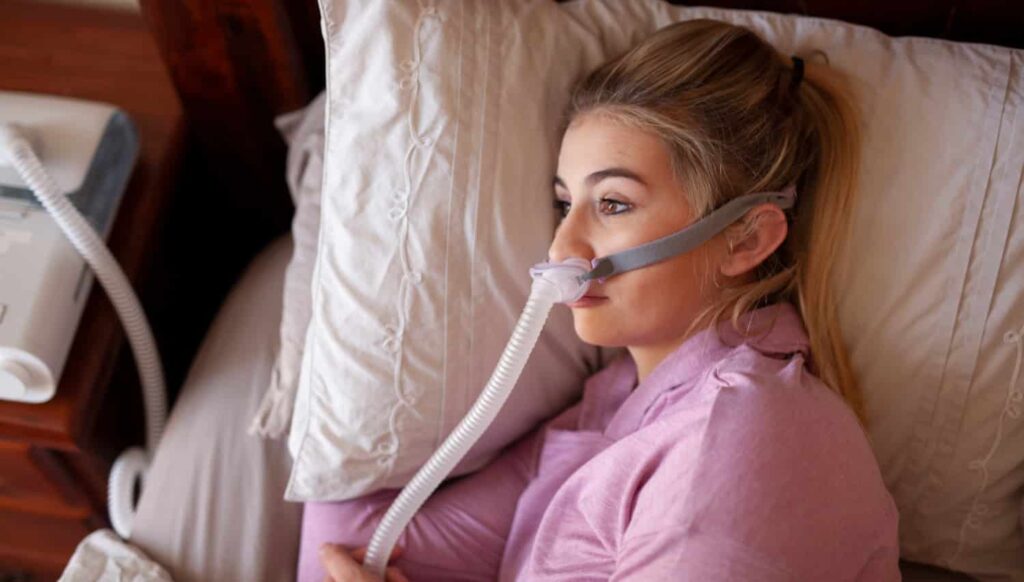
How Does a CPAP Machine Work?
The CPAP machine works by creating a positive pressure that keeps the airway open. When you use a CPAP machine, the pressurized air is delivered through the hose and mask, effectively splinting the airway open and allowing for uninterrupted breathing throughout the night.
The pressure settings on a CPAP machine can be adjusted to meet the specific needs of the individual. A sleep study, conducted by a sleep specialist, is often used to determine the optimal pressure level for each patient. The machine delivers the prescribed pressure consistently, ensuring that the airway remains open and the individual can breathe freely during sleep. Learn more how to buy CPAP machines online in Australia.
In addition to preventing apneas, CPAP machines also help to reduce snoring, another common symptom of sleep apnea. The pressurized air helps to keep the soft tissues in the airway from collapsing and vibrating, which is the main cause of snoring.
The Importance of CPAP Machines for Sleep Apnea
CPAP machines are the gold standard treatment for obstructive sleep apnea, the most common type of sleep apnea. By ensuring a continuous flow of air, CPAP machines help to eliminate sleep apnea events, providing better quality sleep and reducing the associated health risks.
Untreated sleep apnea can have serious consequences on an individual’s overall health and well-being. The repeated interruptions in breathing can lead to chronic fatigue, decreased cognitive function, and an increased risk of accidents, both at home and on the road. Sleep apnea has also been linked to a higher risk of developing conditions such as diabetes, stroke, and heart disease.
CPAP machines offer a non-invasive and highly effective solution for managing sleep apnea. They provide a constant supply of pressurized air, ensuring that the airway remains open and the individual can breathe without interruptions. With regular use, CPAP machines can significantly improve sleep quality, alleviate symptoms, and reduce the risk of associated health complications.
It is important to note that the effectiveness of CPAP therapy relies on consistent and proper usage. Adhering to the recommended treatment plan and regularly maintaining the CPAP machine and its components are essential for optimal results.
Different Types of CPAP Machines
Continuous Positive Airway Pressure (CPAP) machines are a common treatment option for individuals with sleep apnea. They work by delivering a constant flow of pressurized air to keep the airway open during sleep. There are several different types of CPAP machines available, each with its own unique features and benefits.
Standard CPAP Machines
The standard CPAP machine is the most basic type of CPAP device. It delivers a constant pressure throughout the breathing cycle, ensuring that the airway remains open. This type of machine is a reliable and effective option for individuals with mild to moderate sleep apnea without specific requirements for advanced features.
Standard CPAP machines are typically easy to use and maintain. They consist of a motor that generates the airflow, a humidifier to add moisture to the air, and a mask or nasal pillows that deliver the pressurized air to the user’s airway.
Auto-adjusting CPAP Machines
Auto-adjusting or Automatic Positive Airway Pressure (APAP) machines are designed to provide personalized therapy by automatically adjusting the pressure based on the user’s needs. These machines continuously monitor the user’s breathing patterns and adjust the pressure accordingly, providing optimal therapy throughout the night.
One of the main advantages of auto-adjusting CPAP machines is their ability to adapt to changes in the user’s sleep patterns. They can detect variations in breathing and adjust the pressure in real-time, ensuring that the airway remains open and the user receives effective treatment.
Bi-level CPAP Machines
Bi-level or Bilevel Positive Airway Pressure (BiPAP) machines are suitable for individuals who find it difficult to exhale against the pressure of a standard CPAP machine. These machines provide two pressure settings: a higher one during inhalation and a lower one during exhalation, making breathing more comfortable.
Bi-level CPAP machines are often recommended for individuals with certain medical conditions, such as chronic obstructive pulmonary disease (COPD) or congestive heart failure, who may require different pressure levels during inhalation and exhalation.
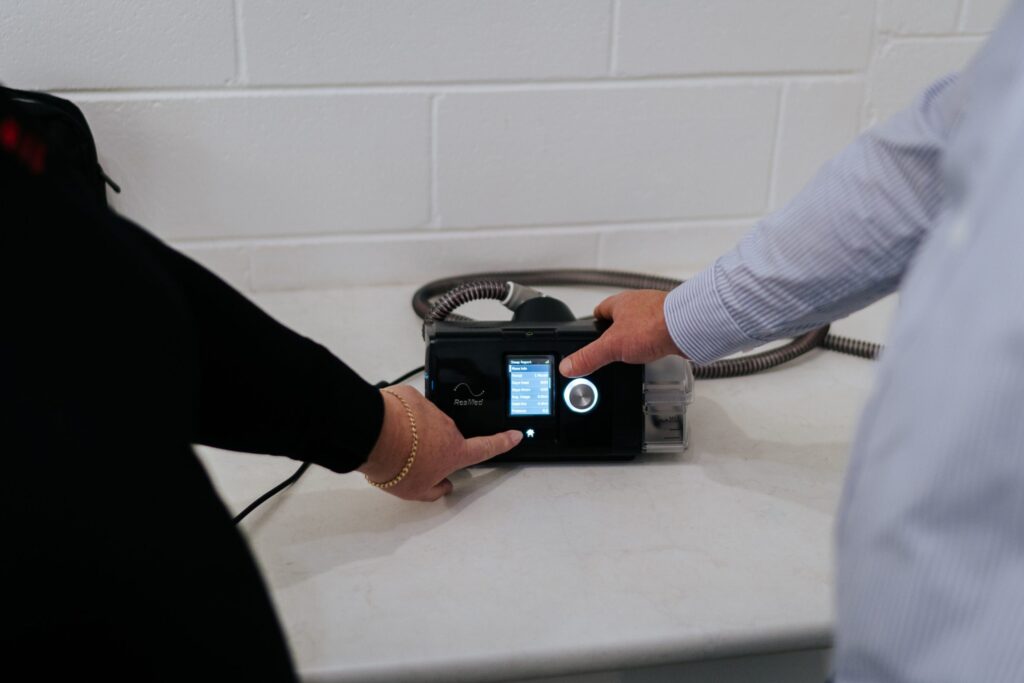
Travel CPAP Machines
Travel CPAP machines are designed for individuals who frequently travel and need a portable solution to continue their sleep apnea therapy while on the go. These machines are compact and lightweight, making them easy to transport.
Travel CPAP machines often feature a smaller design without compromising on performance. They may have built-in battery options or be compatible with external battery packs, allowing users to use them even in environments without easy access to power outlets.
Despite their smaller size, travel CPAP machines still provide the necessary pressure to keep the airway open and effectively treat sleep apnea.
When choosing a CPAP machine, it is important to consult with a healthcare professional who can assess your specific needs and recommend the most suitable option. Whether you opt for a standard, auto-adjusting, bi-level, or travel CPAP machine, the goal is to find a device that provides effective therapy and helps improve your sleep quality and overall well-being.
Factors to Consider When Choosing a CPAP Machine
Your Specific Sleep Apnea Diagnosis
Before choosing a CPAP machine, it’s essential to have a clear understanding of your sleep apnea diagnosis. Sleep apnea is a sleep disorder characterized by pauses in breathing or shallow breaths during sleep. There are three main types of sleep apnea: obstructive sleep apnea, central sleep apnea, and complex sleep apnea syndrome. Each type requires specific features or settings in a CPAP machine to effectively treat the condition.
Obstructive sleep apnea is the most common form and occurs when the muscles in the back of the throat fail to keep the airway open. Central sleep apnea, on the other hand, is caused by a failure of the brain to transmit the proper signals to the muscles that control breathing. Complex sleep apnea syndrome is a combination of both obstructive and central sleep apnea. Understanding your specific sleep apnea diagnosis is crucial in selecting the right CPAP machine to address your unique needs.
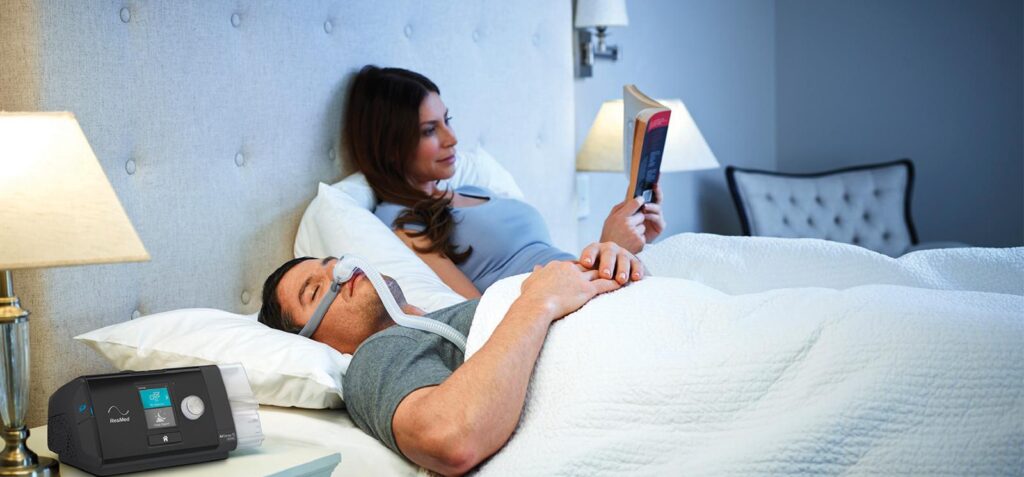
Comfort and Fit
Comfort and fit are crucial when selecting a CPAP machine. It’s essential to choose a mask style that is comfortable for you and ensures a secure fit. There are various mask styles available, including nasal masks, full-face masks, and nasal pillow masks. Nasal masks cover only the nose, full-face masks cover both the nose and mouth, and nasal pillow masks have small cushions that seal around the nostrils.
When trying different mask styles, consider factors such as the size and shape of your face, any facial hair, and personal preferences. The mask should create a seal without causing discomfort or irritation, allowing for a good night’s sleep. Some masks also come with adjustable straps or headgear to provide a customized fit. Take the time to find the right mask that suits your comfort needs and ensures an effective treatment experience.
Noise Level
Noise level is another consideration when choosing a CPAP machine. Some machines are quieter than others, which can be particularly important if you have a sleeping partner who may be disturbed by loud noise. The noise level of a CPAP machine is measured in decibels (dB). Look for machines with low decibel ratings for a peaceful sleep environment.
Modern CPAP machines often come with advanced noise reduction technology, such as whisper-quiet motors and sound-dampening materials. These features help minimize noise and create a more serene sleep environment. Additionally, some machines offer a “ramp” feature that gradually increases the air pressure, reducing any sudden noise disruptions during the initial stages of sleep.
Portability and Size
If you frequently travel or need the flexibility to move your CPAP machine around the house, portability and size are key factors to consider. Traditional CPAP machines are larger and less portable, making them less suitable for travel. However, there are now travel-friendly machines available that are lightweight and compact, making them easy to pack and transport.
Travel-friendly CPAP machines often have a smaller footprint and may come with a carrying case or travel bag for convenience. Some machines also have universal power adapters, allowing you to use them internationally without the need for voltage converters. Consider your lifestyle and the level of portability you require when selecting a CPAP machine.
Cost and Insurance Coverage
CPAP machines can vary significantly in price, so it’s essential to consider your budget. The cost of a CPAP machine depends on various factors, including the brand, features, and technology. It’s worth noting that investing in a high-quality machine can contribute to better treatment outcomes and long-term durability.
Additionally, check with your insurance provider to determine what portion, if any, of the CPAP machine cost will be covered. Some insurance plans may cover a portion or the full cost of a CPAP machine, depending on your specific policy. It’s important to understand your insurance coverage and any requirements or documentation needed to ensure reimbursement.
By understanding CPAP machines, considering the different types available, and evaluating the factors relevant to your sleep apnea diagnosis, comfort, and lifestyle, you can make an informed decision in choosing the best CPAP machine for a restful night’s sleep. Remember to consult with your healthcare provider for personalized recommendations and guidance in selecting the most suitable CPAP machine for your needs.
-
Buy CPAP Machines Online in Australia: Your Path to Better Sleep
Do you often find yourself waking up feeling tired and groggy? Do you struggle to stay awake during the day, even after a full night’s sleep? If so, you may be suffering from sleep apnea, a condition that affects millions of people worldwide. The good news is that there is a solution – CPAP machines. In this article, we will explore the science behind sleep apnea, the benefits of buying CPAP machines online, how to choose the right machine for you, how to use and maintain your CPAP machine, and how to overcome common challenges. So let’s dive in and discover how these machines can transform your sleep and improve your overall well-being.
Understanding Sleep Apnea and the Role of CPAP Machines
Before we delve into the benefits and intricacies of CPAP machines, it’s essential to understand sleep apnea itself. Sleep apnea is a common sleep disorder characterized by recurrent pauses in breathing or shallow breathing during sleep. These pauses, known as apneas, can last for several seconds to minutes, leading to disrupted sleep and oxygen deprivation.
The Science Behind Sleep Apnea:
During normal breathing, air flows freely through the nose and mouth, past the flexible structures at the back of the throat, including the tongue and soft palate. However, in individuals with sleep apnea, these structures collapse, partially or completely, blocking the airway and impeding the flow of air. This obstruction results in decreased oxygen levels in the blood and triggers the brain to wake up momentarily to restore normal breathing. As a result, the sleep cycle becomes fragmented, leading to a poor quality of sleep.
How CPAP Machines Improve Sleep Quality:
Continuous Positive Airway Pressure (CPAP) machines are the gold standard treatment for sleep apnea. They work by delivering a constant stream of pressurized air through a mask or nasal prongs, which helps keep the airway open and provides a steady supply of oxygen. By ensuring that the airway remains unobstructed throughout the night, cpap machine Australia effectively prevent the pauses in breathing, allowing for uninterrupted sleep.
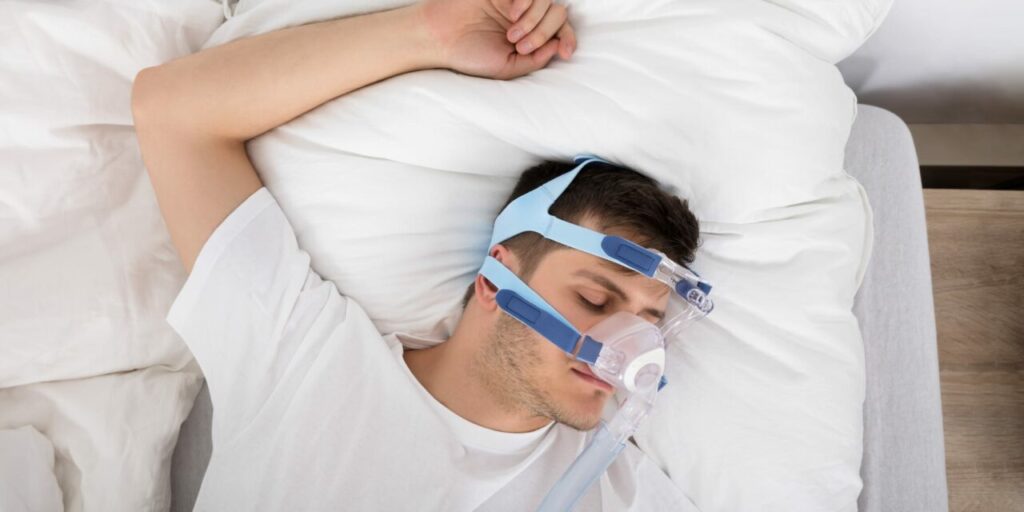
Utilizing the latest technology and advancements in sleep medicine, CPAP machines are designed to deliver the optimal air pressure needed to keep the airway open, tailored to each individual’s specific needs. They not only alleviate the symptoms of sleep apnea but also promote better sleep quality, reducing daytime sleepiness and enhancing overall well-being.
The Benefits of CPAP Therapy:
CPAP therapy has numerous benefits beyond improving sleep quality. By ensuring a continuous supply of oxygen, CPAP machines help prevent the negative health consequences associated with untreated sleep apnea. Sleep apnea has been linked to an increased risk of cardiovascular diseases, including hypertension, heart attack, and stroke. By effectively treating sleep apnea, CPAP machines can help reduce these risks and improve overall cardiovascular health.
In addition to cardiovascular benefits, CPAP therapy can also have a positive impact on mental health. Sleep apnea has been associated with an increased risk of depression, anxiety, and cognitive impairment. By improving sleep quality and ensuring adequate oxygenation, CPAP machines can help alleviate these symptoms and improve overall mental well-being.
Furthermore, CPAP therapy can also improve daytime functioning and quality of life. Individuals with untreated sleep apnea often experience excessive daytime sleepiness, fatigue, and decreased productivity. By addressing the underlying sleep disorder, CPAP machines can significantly reduce these symptoms, allowing individuals to feel more alert, energetic, and focused throughout the day.
It is important to note that CPAP therapy requires proper adherence and regular maintenance. CPAP machines should be cleaned regularly to prevent the buildup of bacteria and ensure optimal performance. Additionally, individuals using CPAP machines should work closely with their healthcare providers to monitor their progress and make any necessary adjustments to the treatment plan.
In conclusion, CPAP machines play a crucial role in the management of sleep apnea. By delivering a constant stream of pressurized air, these machines effectively keep the airway open and provide a steady supply of oxygen, improving sleep quality and preventing the negative health consequences associated with untreated sleep apnea. With proper adherence and regular maintenance, CPAP therapy can significantly enhance overall well-being and quality of life for individuals with sleep apnea.
The Benefits of Buying CPAP Machines Online
Now that we understand how CPAP machines work and their impact on sleep apnea, let’s explore why buying CPAP machines online is the ideal choice for those seeking a convenient and hassle-free shopping experience.
Convenience and Ease of Online Shopping
Buying CPAP machines online offers unparalleled convenience. Gone are the days of driving to brick-and-mortar stores to make your purchase. With just a few clicks, you can explore a wide range of CPAP machines from the comfort of your own home. Online retailers provide detailed product descriptions and specifications, making it easy to compare different models and select the one that suits your needs.
Furthermore, online shopping eliminates the need to adhere to store operating hours, allowing you to browse and make your purchase at any time that is convenient for you. Additionally, most online retailers offer fast and reliable delivery services, ensuring that your CPAP machine arrives promptly at your doorstep.
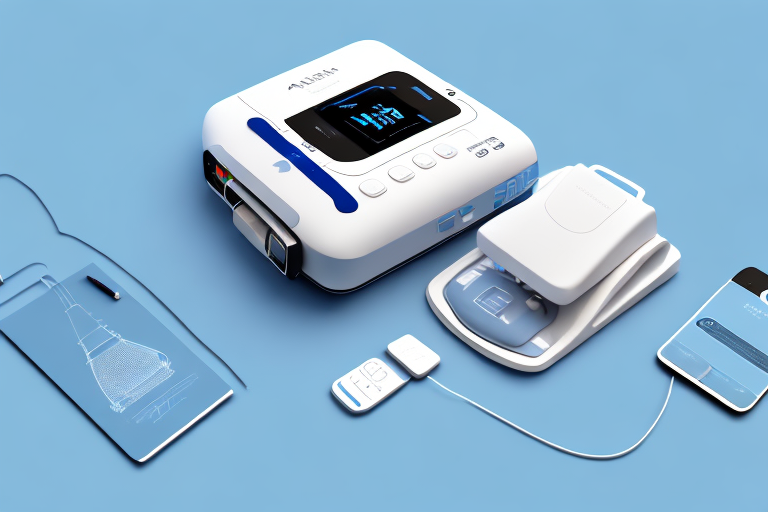
Wide Range of CPAP Machines Available Online
When you buy CPAP machines online, you gain access to a vast array of products from various brands and manufacturers. Online retailers often stock a more extensive selection than traditional stores, allowing you to choose from different models, sizes, and features. This wide range of options ensures that you can find the perfect CPAP machine that fits your preferences and budget.
In addition to CPAP machines, online retailers typically offer a wide range of accessories, including masks, tubing, filters, and humidifiers. This comprehensive selection allows you to find everything you need to set up and maintain your CPAP therapy in one convenient place.
Choosing the Right CPAP Machine for You
With the myriad of options available, choosing the right CPAP machine can seem overwhelming. To help you make an informed decision, consider the following factors:
Factors to Consider When Buying a CPAP Machine
- Prescription Requirements: Ensure that you have a prescription for a CPAP machine from a qualified healthcare provider. This prescription will determine the pressure settings and other specifications of the machine you need.
- Size and Portability: Consider whether you require a portable CPAP machine for travel or a larger unit for home use. Portable machines are typically smaller and lighter, making them convenient for those who are frequently on the go.
- User-Friendly Features: Look for CPAP machines that offer user-friendly features such as intuitive controls, quiet operation, and easy-to-read displays. These features enhance the overall user experience.
- Data Tracking and Connectivity: Some CPAP machines come equipped with advanced features that allow for data tracking and connectivity to various mobile applications. These features provide valuable insights into your sleep patterns and therapy progress.
Understanding Different Types of CPAP Machines
CPAP machines come in various types, each with its own unique features and benefits. The three most common types are:
- Continuous Positive Airway Pressure (CPAP): These machines deliver a constant pressure throughout the night and are suitable for most individuals with obstructive sleep apnea.
- Bilevel Positive Airway Pressure (BiPAP): BiPAP machines provide two levels of pressure – a higher pressure for inhalation and a lower pressure for exhalation. They are often prescribed for individuals who have difficulty exhaling against the pressure delivered by CPAP machines.
- Automatic Positive Airway Pressure (APAP): APAP machines adjust the pressure automatically based on your specific needs throughout the night. This versatility makes them an excellent choice for those whose pressure requirements vary.
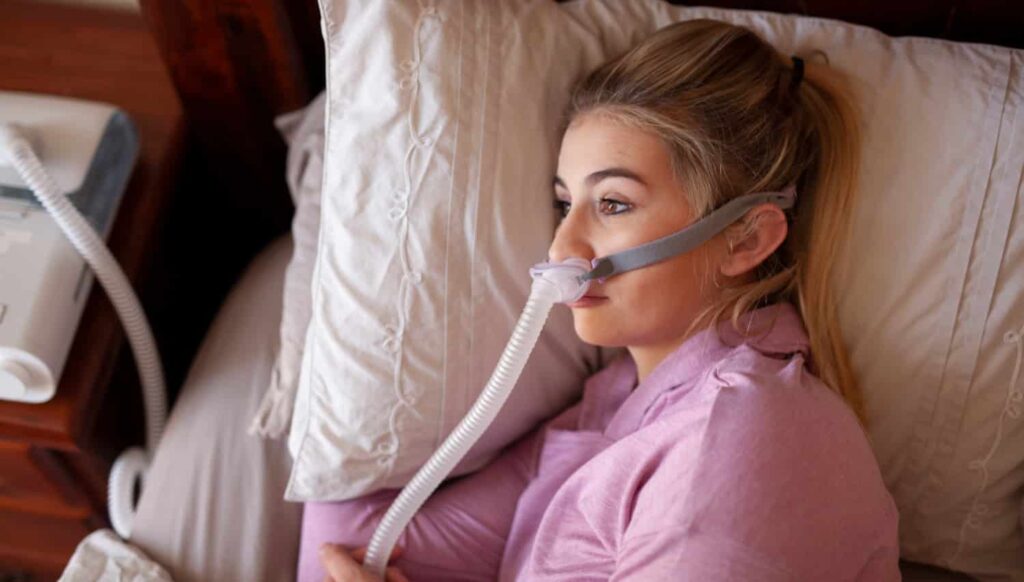
How to Use and Maintain Your CPAP Machine
Congratulations on purchasing your CPAP machine! Now that you have found the perfect one for you, let’s explore how to set it up and maintain it for optimal performance.
Setting Up Your CPAP Machine
Setting up your CPAP machine is a straightforward process. Begin by placing the machine on a stable surface near your bed. Connect the tubing to the machine and attach the mask or nasal prongs securely. Adjust the straps on your mask to ensure a comfortable fit, and adjust the machine’s settings according to your prescription. Once everything is in place, power on the machine and let it run for a few minutes to ensure that the airflow is steady and comfortable.
Cleaning and Maintenance Tips for CPAP Machines
Maintaining proper hygiene and cleanliness is crucial for ensuring the longevity and effectiveness of your CPAP machine. Follow these tips to keep your machine in top condition:
- Daily Cleaning: Clean your mask, tubing, and humidifier chamber daily using warm water and mild soap. Rinse thoroughly and let them air dry before reassembling.
- Weekly Cleaning: Disinfect your CPAP machine, mask, and accessories using a mixture of water and vinegar or a CPAP-specific cleaning solution. Follow the manufacturer’s instructions for proper disinfection and rinse everything thoroughly.
- Regular Filter Replacement: Check the filters in your CPAP machine regularly and replace them as recommended by the manufacturer. Clean or replace disposable filters as needed to ensure proper airflow.
- Maintaining a Clean Environment: Keep your sleeping area clean and free from dust and allergens. Regularly wash your bedding, change pillowcases, and vacuum the room to reduce the buildup of potential irritants.
Overcoming Common CPAP Machine Challenges
As with any new therapy, using a CPAP machine may come with some initial challenges. Let’s address a few common issues and explore strategies to overcome them.
Dealing with Initial Discomfort
Some individuals may experience initial discomfort when using a CPAP machine, such as nasal congestion, dryness, or a feeling of claustrophobia. To alleviate these discomforts, try the following:
- Ensure that the mask or nasal prongs fit properly and are secured but not too tight.
- Consider using a mask liner or a nasal saline spray to alleviate dryness or congestion.
- Gradually increase the duration of CPAP therapy each night to allow your body to adjust to the new sensation.
- Practice relaxation techniques, such as deep breathing or meditation, before using the CPAP machine to reduce anxiety or feelings of claustrophobia.
Troubleshooting Common CPAP Machine Problems
At times, you may encounter technical issues or problems with your CPAP machine. Here are some common problems and their possible solutions:
- Mask Leaks: Ensure that the mask is properly fitted and tightened. Try adjusting the straps or switching to a different type of mask or nasal prongs that suit your facial structure better.
- Dry Mouth: To combat dry mouth, try using a chin strap to keep your mouth closed during sleep or consider using a CPAP machine with a heated humidifier to add moisture to the air.
- Noise: If your CPAP machine is noisy, make sure that all connections are secure. Consider using a machine with a noise-reducing design or placing the machine further away from your bed.
- Pressure Discomfort: If you find the pressure settings uncomfortable, consult with your healthcare provider to adjust the pressure or consider using a machine with advanced pressure relief features.
By addressing these issues and seeking guidance from healthcare professionals when needed, you can overcome challenges and fully reap the benefits of CPAP therapy.In conclusion, buying CPAP machines online in Australia is a convenient and efficient way to improve your quality of sleep and overall well-being. CPAP machines alleviate the symptoms of sleep apnea, ensuring uninterrupted breathing and better sleep quality. With a wide range of options available online, you can choose the perfect CPAP machine that suits your needs and preferences. By following the appropriate setup and maintenance routine, you can enjoy years of effective therapy. So why wait? Take the first step towards better sleep and buy your CPAP machine online today!
-
How Sleep Apnea Machines Improve Daily Performance and Energy Levels
Sleep apnea is a common sleep disorder that affects millions of people worldwide. If you are someone who experiences this condition, you may know firsthand the negative impact it can have on your daily performance and energy levels. Fortunately, there are sleep apnea machines available that can greatly improve these aspects of your life. In this article, we will delve into the science behind sleep apnea, the role of sleep apnea machines, and the connection between sleep apnea and daily performance. We will also explore how sleep apnea machines can boost energy levels and discuss the long-term benefits of using these devices.
Understanding Sleep Apnea
Sleep apnea is a sleep disorder characterized by periodic interruptions in breathing during sleep. These interruptions, known as apneas, can occur multiple times throughout the night and result in disrupted sleep patterns. There are several types of sleep apnea, including obstructive sleep apnea, central sleep apnea, and complex sleep apnea syndrome.
The Science Behind Sleep Apnea
Obstructive sleep apnea is the most common form of sleep apnea and is typically caused by the relaxation and collapse of the muscles in the throat, which obstructs the airway. This obstruction leads to a decrease in oxygen levels in the blood, causing the brain to momentarily wake up to restore proper breathing. These repeated awakenings disrupt the natural sleep cycle and prevent the individual from entering deep, restorative sleep stages.
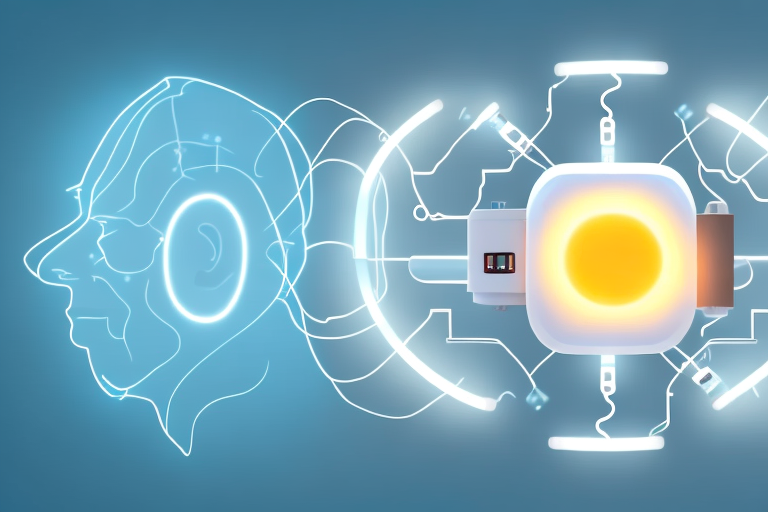
During an apnea episode, the individual may experience a brief pause in breathing, lasting for a few seconds to a minute. This interruption in breathing can happen multiple times per hour, leading to fragmented and poor-quality sleep. As a result, individuals with sleep apnea often wake up feeling tired and groggy, despite having spent the recommended number of hours in bed.
Furthermore, the interrupted breathing during sleep can have detrimental effects on the body. The decrease in oxygen levels can put strain on the cardiovascular system, increasing the risk of high blood pressure, heart disease, and stroke. Sleep apnea has also been linked to other health conditions such as diabetes, obesity, and depression. Click here to read more about The Role of Humidity and Sleep Apnea Machines: Why It Matters.
Common Symptoms of Sleep Apnea
Identifying the symptoms of sleep apnea is crucial in seeking appropriate treatment. Some common signs of sleep apnea include loud snoring, gasping for air during sleep, excessive daytime sleepiness, morning headaches, and difficulty concentrating. However, it is important to note that not all individuals with sleep apnea experience these symptoms, and some may exhibit different signs.
In addition to the physical symptoms, sleep apnea can also impact an individual’s emotional well-being. The chronic sleep deprivation caused by the disorder can lead to irritability, mood swings, and difficulty managing stress. Relationships may also be affected, as the loud snoring and sudden awakenings can disrupt the sleep of bed partners.
If left untreated, sleep apnea can have serious consequences on your physical and mental well-being. It is important to consult with a healthcare professional if you suspect you may have sleep apnea, as early diagnosis and treatment can greatly improve your quality of life.
The Role of Sleep Apnea Machines
Sleep apnea machines, also known as continuous positive airway pressure (CPAP) machines, are considered the gold standard in the treatment of sleep apnea. These devices work by delivering a constant flow of air pressure through a mask worn over the nose and/or mouth, effectively keeping the airway open during sleep.
But what exactly is sleep apnea? Sleep apnea is a common sleep disorder characterized by pauses in breathing or shallow breaths during sleep. These pauses can last from a few seconds to minutes and can occur multiple times throughout the night. Sleep apnea not only disrupts the quality of sleep but can also have serious health consequences if left untreated.
There are three main types of sleep apnea: obstructive sleep apnea (OSA), central sleep apnea (CSA), and complex sleep apnea syndrome (CSAS). OSA is the most common form and occurs when the airway becomes partially or completely blocked during sleep, leading to breathing difficulties. CSA, on the other hand, is caused by a failure of the brain to transmit the proper signals to the muscles that control breathing. CSAS is a combination of both OSA and CSA.
Different Types of Sleep Apnea Machines
There are several types of sleep apnea machines available, including standard CPAP machines, bilevel positive airway pressure (BiPAP) machines, and automatic positive airway pressure (APAP) machines. Each type of machine has its own unique features and benefits. Consulting with a sleep specialist can help determine the most suitable type for your specific needs.
Standard CPAP machines deliver a constant and continuous air pressure, which helps to keep the airway open throughout the night. BiPAP machines, on the other hand, provide two levels of pressure: a higher pressure during inhalation and a lower pressure during exhalation. This can be beneficial for individuals who have difficulty exhaling against a constant pressure. APAP machines, also known as auto-adjusting machines, automatically adjust the pressure based on the individual’s needs throughout the night.
How Sleep Apnea Machines Work
Sleep apnea machines deliver a continuous stream of pressurized air that gently blows into the airway, preventing any collapse or obstruction. This continuous airflow helps to maintain an open airway throughout the night, ensuring uninterrupted breathing and a restful sleep. The machines are also equipped with filters that purify the air, preventing the inhalation of irritants and allergens.
But how does the machine know the right amount of pressure to deliver? Sleep apnea machines are typically set up and calibrated by a sleep specialist or technician. They use various measurements and data, such as the severity of the individual’s sleep apnea, to determine the optimal pressure settings. These settings can be adjusted over time to ensure the most effective treatment.
It’s important to note that using a sleep apnea machine may take some time to get used to. Wearing a mask and having a constant flow of air can initially feel uncomfortable for some individuals. However, with time and practice, most people adapt to the machine and experience significant improvements in their sleep quality and overall well-being.
In addition to the immediate benefits of improved sleep, using a sleep apnea machine can also have long-term health benefits. By effectively treating sleep apnea, individuals can reduce their risk of developing other health conditions such as high blood pressure, heart disease, stroke, and diabetes. It can also help alleviate symptoms such as daytime fatigue, morning headaches, and difficulty concentrating.
Overall, sleep apnea machines play a crucial role in the management and treatment of sleep apnea. They provide a non-invasive and effective solution for maintaining an open airway during sleep, ensuring uninterrupted breathing and a restful night’s sleep. If you suspect you may have sleep apnea, it is important to consult with a healthcare professional who can guide you through the diagnosis and treatment process.
The Connection Between Sleep Apnea and Daily Performance
Living with untreated sleep apnea can have a significant impact on your daily performance and overall quality of life. The interruption of the natural sleep cycle and the subsequent lack of restorative sleep can result in cognitive impairments, decreased concentration, decreased productivity, and increased risk of accidents and errors.
When it comes to cognitive functions, studies have shown that individuals with sleep apnea often experience cognitive dysfunction, including difficulties with memory, attention, and executive function. The effects of sleep deprivation caused by untreated sleep apnea can impair the brain’s ability to process information and consolidate memories, leading to decreased mental clarity and performance.
But it’s not just cognitive functions that are affected by sleep apnea. Physical performance can also be impacted. The fragmented sleep caused by sleep apnea can lead to muscle fatigue, decreased stamina, and decreased physical endurance. This can be particularly detrimental for athletes and individuals who engage in regular physical activities.
Imagine trying to perform at your best in a marathon or a basketball game when your body hasn’t had the chance to fully recover and recharge during sleep. The lack of restorative sleep caused by sleep apnea can leave you feeling sluggish, with decreased energy levels and reduced physical capabilities.
Furthermore, the effects of sleep apnea on physical performance extend beyond just sports and physical activities. In everyday life, tasks that require physical exertion, such as household chores or even walking up a flight of stairs, can become more challenging and exhausting for individuals with sleep apnea.
It’s important to note that the impact of sleep apnea on daily performance is not limited to cognitive and physical aspects. Sleep apnea can also affect emotional well-being and overall mood. The constant fatigue and lack of quality sleep can contribute to feelings of irritability, mood swings, and even depression.
Addressing sleep apnea and seeking treatment is crucial for improving daily performance and overall quality of life. By effectively managing sleep apnea, individuals can experience improved cognitive functions, increased energy levels, enhanced physical performance, and a better overall mood.
Sleep Apnea Machines and Energy Levels
One of the most significant benefits of using sleep apnea machines is the positive impact they have on energy levels. When sleep apnea is effectively treated, individuals often experience increased daytime alertness, improved cognitive function, and improved overall mood.
The Effect of Sleep Apnea on Energy Levels
Untreated sleep apnea can leave you feeling exhausted and drained, even after a full night’s sleep. The frequent awakenings and interruptions in breathing prevent you from reaching deep, restorative sleep stages, which are essential for rejuvenating the body and mind. This can result in chronic fatigue and a lack of energy throughout the day.
How Sleep Apnea Machines Boost Energy
By effectively treating sleep apnea, sleep apnea machines help to restore healthy sleep patterns and improve energy levels. The continuous airflow provided by the machines ensures that the airway remains open and unobstructed, allowing for uninterrupted breathing and restful sleep. As a result, individuals using sleep apnea machines often report feeling more energized and alert during the day.
Long-Term Benefits of Using Sleep Apnea Machines
Using sleep apnea machines not only provides immediate relief from the symptoms of sleep apnea but also offers long-term benefits that can greatly enhance your quality of life.
Improved Quality of Life
By effectively treating sleep apnea, individuals experience improved overall quality of life. The restoration of restful sleep leads to increased vitality, improved mood, and enhanced mental and physical well-being. Relationships may also benefit, as untreated sleep apnea can cause irritability and mood swings, which can strain personal and professional interactions.
Preventing Serious Health Complications
Untreated sleep apnea has been linked to several serious health complications, including cardiovascular diseases, high blood pressure, stroke, and diabetes. By using sleep apnea machines, individuals can significantly reduce their risk of developing these potentially life-threatening conditions.
In conclusion, sleep apnea machines play a crucial role in improving daily performance and energy levels for individuals with sleep apnea. These devices effectively treat the underlying causes of sleep apnea, allowing for uninterrupted breathing and restful sleep. By restoring healthy sleep patterns, sleep apnea machines positively impact cognitive functions, physical performance, and overall energy levels. Additionally, the long-term benefits of using sleep apnea machines include improved quality of life and a reduced risk of serious health complications. If you suspect that you may have sleep apnea, it is important to seek medical evaluation and consider the benefits of sleep apnea machines in improving your well-being.
-
Tips for Adjusting to Life with a CPAP Mask
Adjusting to life with a CPAP mask can be challenging, but with the right tips and techniques, you can ease the transition and experience the benefits of this life-changing device. In this article, we will provide you with valuable insights into understanding the importance of a CPAP mask, getting acquainted with your CPAP mask, overcoming common CPAP challenges, integrating CPAP into your nightly routine, and maintaining your CPAP equipment.
Understanding the Importance of a CPAP Mask
Before delving into the tips for adjusting to life with a CPAP mask, it’s essential to understand its significance in sleep apnea treatment. Sleep apnea is a sleep disorder characterized by pauses in breathing or shallow breaths during sleep. CPAP, which stands for Continuous Positive Airway Pressure, is a therapy that uses mild air pressure to keep the airways open, preventing breathing interruptions that occur due to sleep apnea.
By delivering a continuous flow of air through a mask worn over the nose or mouth, CPAP helps maintain a steady breathing pattern, ensuring uninterrupted sleep. This plays a crucial role in improving sleep quality and reducing the risk of associated health problems.
The Role of CPAP in Sleep Apnea Treatment
Sleep apnea can significantly impact your quality of life and overall health. Untreated sleep apnea may lead to daytime fatigue, morning headaches, difficulty concentrating, and even cardiovascular issues. CPAP therapy has proven to be a highly effective non-invasive treatment for sleep apnea, providing relief from symptoms and improving overall well-being.
CPAP works by creating a constant flow of air pressure, which acts as a splint to keep the airways open. This prevents the collapse of the throat muscles that cause sleep apnea episodes. By ensuring a continuous supply of oxygen, CPAP therapy helps reduce the strain on the heart and lungs, improving cardiovascular health.
Furthermore, CPAP therapy has been shown to alleviate symptoms such as loud snoring and restless sleep, allowing both the user and their sleep partner to enjoy a peaceful night’s rest. This can have a positive impact on relationships and overall quality of life.
Health Benefits of Regular CPAP Use
Regular use of a CPAP mask brings forth numerous health benefits. By ensuring adequate oxygen supply during sleep, CPAP helps reduce the risk of heart disease, stroke, and high blood pressure. Sleep apnea has been linked to an increased risk of cardiovascular problems, and CPAP therapy addresses this concern by maintaining normal breathing patterns throughout the night.
Moreover, CPAP therapy can alleviate symptoms of excessive daytime sleepiness, a common consequence of sleep apnea. By providing a restful night’s sleep, CPAP allows individuals to wake up feeling refreshed and energized, improving their ability to concentrate and perform daily tasks.
In addition to the physical health benefits, CPAP therapy also plays a crucial role in reducing the risk of accidents caused by drowsiness throughout the day. By promoting better sleep quality, CPAP helps individuals stay alert and focused, enhancing overall safety and quality of life.
It’s important to note that CPAP therapy is not a cure for sleep apnea but rather a management tool. Consistent and regular use of the CPAP mask is essential for optimal results. Adapting to life with a CPAP mask may take time and patience, but the long-term benefits are well worth the effort.
In conclusion, the CPAP mask is a vital component of sleep apnea treatment, offering numerous health benefits and improving overall well-being. By understanding the significance of CPAP therapy and its role in maintaining normal breathing patterns during sleep, individuals can embrace the mask as a valuable tool in their journey towards better sleep and a healthier life.
Getting Acquainted with Your CPAP Mask
Now, let’s explore some tips to help you get acquainted with your CPAP mask. Familiarizing yourself with CPAP components and learning how to properly fit your mask are key steps to ensure effective and comfortable therapy.
Familiarizing Yourself with CPAP Components
A CPAP mask consists of various components, including the mask itself, headgear, tubing, and a machine that delivers the pressurized air. Each component plays a vital role in delivering the therapy you need to improve your sleep apnea symptoms. Let’s dive deeper into each component:
The mask: This is the part of the CPAP system that fits over your nose or mouth, depending on the type of mask you have. It creates a seal to prevent air leaks and ensures that the pressurized air reaches your airways effectively. There are different styles and sizes available, so it’s important to find the one that suits you best.

Headgear: The headgear is responsible for securing the mask in place while you sleep. It should be adjustable to achieve a secure yet comfortable fit. The straps should not be too tight, as this can cause discomfort, but they should also not be too loose, as it may lead to air leaks. Take the time to adjust the headgear properly to ensure a snug fit.
Tubing: The tubing connects the mask to the CPAP machine, allowing the pressurized air to flow from the machine to your airways. It’s important to keep the tubing clean and free from any obstructions to ensure optimal therapy. Regularly inspect the tubing for any signs of wear and tear, and replace it if necessary.
CPAP machine: This is the heart of the CPAP system. It delivers the pressurized air that keeps your airways open during sleep. The machine should be placed on a stable surface near your bed, and the settings should be adjusted according to your prescribed pressure. Familiarize yourself with the controls and functions of the machine to ensure proper usage.
Read the instruction manual thoroughly to understand how each component works together to provide optimal therapy. If you have any questions or need clarifications, don’t hesitate to reach out to your healthcare provider or CPAP supplier. They are there to support you on your journey to better sleep. You can also read about Note this about different CPAP masks by visiting https://supplementsforskinhealth.com/note-this-about-different-cpap-masks/
How to Properly Fit Your CPAP Mask
Proper fitting is crucial to ensure an effective and comfortable CPAP experience. When your mask fits well, it minimizes air leaks and maximizes the effectiveness of the therapy. Here are some steps to help you achieve the perfect fit:
Adjust the headgear straps: Start by adjusting the headgear straps to achieve a secure yet comfortable fit. The straps should be snug but not too tight. It’s important to find the right balance to avoid discomfort and pressure marks. Take your time to adjust the straps until you find the perfect fit.
Create a seal: The mask should create a seal over your nose or mouth, depending on the type of mask you have. This seal ensures that the pressurized air is delivered effectively to your airways. If you notice any air leaks, adjust the straps or try a different size or style of mask. It may take some trial and error to find the mask that fits you perfectly.
Seek professional guidance: If you’re having difficulty finding the perfect fit or if you’re unsure about the size or style of mask that suits you best, don’t hesitate to seek professional guidance. Your healthcare provider or CPAP supplier can help you select and fit your CPAP mask properly. They have the knowledge and expertise to guide you through the process and ensure that you get the most out of your therapy.
Remember, finding the right CPAP mask and achieving a proper fit is essential for effective and comfortable therapy. Don’t hesitate to reach out for help and support along the way. Your journey to better sleep starts with a well-fitted CPAP mask.
Overcoming Common CPAP Challenges
While adjusting to life with a CPAP mask, you may encounter common challenges that can be overcome with the right strategies and support.
Dealing with Initial Discomfort
It’s common to experience initial discomfort when first using a CPAP mask. This discomfort may arise from the sensation of wearing a mask, feeling confined, or struggling to sleep in a new position. To overcome this, gradually increase your usage time, starting with short periods during the day, and gradually progressing to wearing the mask throughout the night. This allows your body to adjust to the mask’s presence, making it more comfortable to wear as you sleep.
Managing Common Side Effects
Some users may experience side effects such as dry mouth, nasal congestion, or skin irritation. To manage dry mouth, try using a heated humidifier that adds moisture to the air delivered by the CPAP machine. Nasal congestion can be alleviated by using saline nasal sprays or nasal rinses before bed. If skin irritation occurs, ensure that your mask is clean and properly fitted. Using moisturizers or barrier creams can also help protect your skin from irritation.
Tips for Integrating CPAP into Your Nightly Routine
For successful CPAP therapy, it’s essential to integrate it into your nightly routine seamlessly. Creating a comfortable sleep environment and establishing a pre-sleep routine can greatly enhance the effectiveness and adherence to CPAP therapy.
Creating a Comfortable Sleep Environment
Your sleep environment plays a vital role in ensuring a restful night’s sleep. Keep your bedroom cool, dark, and free from distractions. Invest in a comfortable mattress and pillows to enhance overall comfort and support. Additionally, consider using white noise machines or earplugs to drown out any sounds that may disrupt your sleep.
Establishing a Pre-Sleep Routine
Establishing a pre-sleep routine can signal your body that it’s time to wind down and prepare for sleep. Engage in relaxing activities such as reading a book, practicing deep breathing exercises, or taking a warm bath. Avoid exposure to bright screens or stimulating activities close to bedtime, as they can interfere with your ability to fall asleep.
Maintaining Your CPAP Equipment
Maintaining your CPAP equipment is crucial for its longevity and effective performance. Regular cleaning and timely replacement of parts ensure optimal therapy and prevent the accumulation of bacteria or allergens. Click here to read about Health Conditions Prevalence.
Daily and Weekly Cleaning Tips
Clean your CPAP mask, headgear, and tubing daily using mild soapy water or a CPAP mask cleaner. Ensure all components are thoroughly dried before assembly. Weekly, sanitize your CPAP machine using a manufacturer-approved CPAP cleaner or a combination of vinegar and water. Follow the manufacturer’s guidelines for specific cleaning instructions to avoid damaging your equipment.
When to Replace CPAP Parts
CPAP parts, such as cushions or filters, may require replacement over time. Inspect your equipment regularly and replace any worn-out or damaged parts. Consult your equipment manual or reach out to your CPAP supplier to determine the recommended replacement schedule for your specific equipment.
Conclusion
Adjusting to life with a CPAP mask may require patience and perseverance, but the benefits of effective sleep apnea treatment are well worth the effort. By understanding the importance of a CPAP mask, getting acquainted with your equipment, overcoming challenges, integrating CPAP into your nightly routine, and maintaining your CPAP equipment, you can successfully adapt to the CPAP therapy and experience improved quality of sleep and overall well-being.
-
Utilizing your CPAP machines to the fullest
Beginning CPAP therapy can be both exciting and intimidating. CPAP devices are used to treat obstructive sleep apnea and are not complex to use or maintain. To get the most out of your new device, here are a few tips: ensure you have the right CPAP mask (nasal pillow, full face, or nasal masks are the most common), adjust the air pressure to the recommended setting, and keep your CPAP device clean. CPAP direct, CPAP Australia and CPAP treatment are all resources to help you get the most out of your CPAP machine.
Use it every night
To treat sleep apnea, CPAP (Continuous Positive Airway Pressure) machines are the most effective solution. It is important to use the CPAP machines online every night to achieve the best results, as skipping a night can lead to a loss of rest. Portable CPAP machines have become increasingly popular for those who often travel and are just as functional as regular machines. Additionally, buying most CPAP masks, such as nasal pillow masks and nasal masks, from CPAP Direct or CPAP Australia will provide the necessary air pressure for CPAP therapy and CPAP treatment.
Keep Your Device Clean
Maintaining your CPAP (Continuous Positive Airway Pressure) machine is essential for treating Obstructive Sleep Apnea and enjoying the benefits of CPAP therapy. Regular cleaning and maintenance will ensure your CPAP machine functions to its full potential and has a longer lifetime. When cleaning your CPAP device, be sure to clean the mask, the filter, the tubing, and the reservoir of the humidifier. When necessary, replace your CPAP mask with one of the most popular CPAP masks, such as a nasal pillow mask or a nasal mask. CPAP Australia offers a wide range of CPAP masks, as well as CPAP machines, pressure machines, and CPAP treatment accessories at CPAP Direct.

Here, you may read additional information about CPAP maintenance and cleaning.
Put your mask on properly.
When you are diagnosed with sleep apnea, a common treatment is to use a CPAP machine. However, one of the most prevalent issues that new CPAP users have is a mask that doesn’t fit properly. This can cause air leakage, which can reduce the therapeutic effect, as well as leave your face and eyes irritated all night. To make sure your mask is the right fit for you, it should cover your nose and mouth without putting pressure on your face.
If the mask is still too uncomfortable, try a different style. You should also make sure your machine is in the correct settings, such as the pressure and sleep position. For those who need two pressure settings, a BiPAP or APAP machine may be more suitable. A good night’s sleep is possible with the right CPAP machine, and speaking to a sleep doctor can help you find the right settings and machine for your needs. You can also read about Certain Philips Respironics Masks for BiPAP by clicking here.
Reasons why most people don’t use their CPAP machines
It is normal that getting used to using CPAP machines takes some getting used to. Most people find it difficult to maintain regular utilization of the equipment due to the price and inconvenience, but you are not alone. The following list of reasons for not utilizing CPAP machines is followed by solutions:
1. Cost
If you have been diagnosed with sleep apnea, a common treatment is to use a CPAP machine. You have two options to select the right CPAP machine: rent from a medical equipment company or purchase your own. Most insurance companies cover the costs, which can be helpful for those who worry about the price. If your insurance provider pays up to 80% of the cost, you may only need to pay between $100-200 out of pocket.

Be sure to contact your insurance provider to find out what coverage your deductible covers. If you can’t buy a CPAP machine right away, you may consider renting one until you can. Generally, CPAP machines have one or two pressure settings. If you have trouble with skin irritation, you might need a Bilevel or BiPAP machine, which has two pressure settings (a lower pressure for inhalation and a higher pressure for exhalation). With the right CPAP machine, you can get a good night’s sleep and the right pressure settings to benefit your sleep doctor’s treatment plan.
Adult asthma, type II diabetes, and cardiovascular disease are other sleep apnea side effects that might increase your healthcare costs. average annual cost per person
- Cardiovascular disease costs $18,953
- Type II diabetes – $13,700
- Adult asthma: $9,127
2. Discomfort
If you have been diagnosed with sleep apnea, a common treatment is to use a CPAP machine. Finding the right CPAP machine for you is important if you want to get a good night’s sleep. Speak with your doctor or the business that supplies your CPAP machine if you have tried sleeping with a face mask on and had no luck. They could let you browse for alternative mask designs or provide advice on how to properly adjust the pressure settings for a better fit.

There are many various types of CPAP machines, including BiPAP and APAP machines, which offer two pressure settings, and a new CPAP machine with one pressure setting. It is also important to consider your sleep position and any potential skin irritation. The newest CPAP machines on the market are lighter and more portable than those from even a few years ago.
3. Noise
CPAP machines are a great treatment for sleep apnea, and they are much smaller than one might think. The higher-pressure air they provide helps keep a person’s airway open during sleep, and the adjustable straps on the mask and breathing machine ensure a comfortable fit. Newer models are even quieter, so if you own an older one, consider making the switch for a more peaceful sleep. Additionally, it is important to make sure the air filter is clean and clear, and you can always have your doctor check the machine to make sure it is working properly. CPAP machines are a great way to treat apnea and snoring and are essential for any sleep therapy.
4. Restless night
Many CPAP users have difficulty relaxing and sleeping due to the continuous positive airway pressure (CPAP) machine’s forced air pressure. Fortunately, CPAP machines come with a “ramp” setting that helps users fall asleep. This setting starts at a very low-pressure level and gradually increases over time. In addition, a CPAP device with a humidifier can help reduce dryness in the air, improving the overall quality and comfort of CPAP therapy for sleep apnea.

CPAP machines and CPAP masks, such as the nasal pillow mask or the nasal mask, are available in Australia through CPAP Direct, and most CPAP masks are designed to help CPAP users with obstructive sleep apnea.
5. Fear of Small Spaces
Continuous Positive Airway Pressure (CPAP) machines are used to treat obstructive sleep apnea and are a common form of CPAP therapy in Australia. CPAP machines use air pressure to keep the airways open. The most common CPAP masks are nasal pillow masks, nasal masks, and full-face masks. CPAP Direct provides a guide and size chart for people to find the right CPAP device for them. On occasion, individuals experience anxiety while using CPAP machines for the first time. Keep in mind that the device is meant to help you and improve your quality of life. To help overcome this anxiety, wear the mask while conscious and try out several relaxation methods while wearing the mask. You may also feel better if the size or form of the mask is altered.
6. Pressure Stains or Skin Abrasions
If you find that using your CPAP machine has made your skin swollen and red, there are a few easy solutions you may try. Be sure to clean your pads often and check to see if they are old or worn out. To ensure a good fit when choosing a mask, it is essential to measure yourself using a size chart. If you have an unusually unpleasant reaction on your first night, it is recommended that you see a doctor.
7. CPAP Machines: Effective Cleaning Procedures
Continuous Positive Airway Pressure (CPAP) machines are essential for those suffering from Obstructive Sleep Apnea (OSA). To keep your CPAP machine in top condition, it is important to follow effective cleaning procedures. Take the mask, tubing, and headpiece to the shower once a week and give it a quick wash with some dish soap. Hang it out to dry over the showerhead later that night when you remember to properly attach it.
8. Accidental Removal When You’re Asleep
You often wake up in the middle of the night realizing you have removed your CPAP mask. This is typically due to a lot of movement while you sleep or because your nose is congested. Increasing humidity may help keep the nasal airway open, and if this doesn’t work, a chin strap could be utilized to fix the problem. If you often wake up without a mask, it may be beneficial to set a midnight alarm to make sure it is still firmly secured.
9. A stuffy or dry nose and mouth
If you have a continuous positive airway pressure (CPAP) device, the first and easiest method to prevent dry mouth and nose is to verify whether your CPAP machine has a heated humidifier. Increasing the humidifier’s temperature will help keep the nasal passages wet and open. If not, consider purchasing a CPAP machine with a heated humidifier, as this is an effective way to treat sleep apnea, which is a common symptom of obstructive sleep apnea. Other options include buying a nasal saline spray and checking your CPAP mask for leaks. Most CPAP masks, such as a nasal, nasal pillow, and full face masks, available from CPAP Direct and CPAP Australia, are designed to provide an effective CPAP treatment, but a leaky mask can also often result in dry mouth and nose.
Must Read:
- Choosing a CPAP Mask for Your Sleeping Position: Tips and Considerations
- Maximising Comfort: Strategies for Reducing CPAP Mask Discomfort
- Precision and Clarity: Navigating the World of LASIK Vision Correction
- The Ultimate Guide to CPAP Machines: Choosing the Best for You
- Buy CPAP Machines Online in Australia: Your Path to Better Sleep
-
You’ll find these CPAP machines in Australia
In Australia, there are three different types of CPAP machines.
CPAP masks that cover the entire face
The most popular CPAP machines type for CPAP therapy is this one. As implied by its name, this mask covers the nose, mouth, and a portion of the face. Having a strong seal helps to provide the greatest protection against leaks. Without taking it off, it can be challenging to seal off. This mask is currently being used widely. Some users of the mask might experience claustrophobia. People also mention finding it challenging to read or watch TV due to the size of the mask.
Nasal CPAP masks
Given the length of time required to set up the CPAP machines, it might be difficult for those who prefer to read in bed to do so. If they are wearing a full face mask, their line of sight may be obstructed, making it difficult for them to read. The more compact CPAP nasal masks, which do not completely cover the nose, allow you to comfortably read your material.

Nasal pillows for CPAP
Try CPAP nasal pillows if you want to buy CPAP machines online. The development of technology compelled us to think beyond the confines of traditional masks and develop fresh methods for delivering pressure directly to the user’s air canals.
Nasal cushions are the answer to this. These pillows, which are little objects that are attached to each air tube carried by CPAP machines, aren’t exactly masks. The pillows include an opening at the end of those tubes that may be placed directly into the nose to avoid occlusion while you sleep.
What Factors must You Take into account before buying a CPAP mask online?
Now that we are aware of the many CPAP machines types that can be purchased, the following considerations should be made before choosing a CPAP mask.
Comfy
Taking into account what makes you comfortable may help you make a good buying choice. Make sure the seals are in place and that you can wear the mask for lengthy periods of time without experiencing any pain before judging your degree of comfort.
Sleeping practices
How you sleep will also have an impact on the CPAP machines you choose. If you often toss and turn while you sleep, the standard mask won’t work.

Size and sealing of the mask
Take into account the mask’s size when making a CPAP mask purchase. A suitable mask should be selected depending on the pressure and fit.
Information about equipment and treatment
You will need a mask that can withstand it if it is suggested that you begin therapy at a greater pressure. Some devices have requirements for their own masks. As a consequence, you may base your choice on it.
To achieve the best-fitting CPAP mask, just follow these five simple steps:
Understand how to sleep
If you’re searching for the greatest CPAP machines for the first time, this step is really crucial. Some people prefer to breathe through their lips when they are asleep. Some people exclusively breathe through their noses, never through their lips. Some individuals breathe via their lips initially before switching to their noses as they drop off to sleep. How do you determine how you sleep? If you are unsure, get some advice! Your bed partner would be educated. Ask a friend or family member whether they think you should spend the night alone if they have seen you asleep. Once you are conscious of your sleeping habits, you could begin to consider various CPAP machines types.
Do you change positions when you’re sleeping?
Frequent position changes while you sleep may cause the seal between the mask and the face to break, which may be uncomfortable for you since air starts to shoot out the side and may signify you need a new mask. Knowing how you sleep is the first step in selecting the best CPAP machines.
Do you breathe in or out via your mouth or nose?
If you only breathe through your nose, a nasal or nasal cushion CPAP mask may be the most comfortable option for you. If you prefer to breathe through your mouth and nose while you sleep, start considering full-face or hybrid CPAP mask options. Both a mouthpiece attachment and a nasal cushion attachment are included with a hybrid CPAP mask. If you wear a chinstrap to hold your lips together and breathe through your mouth, you may still utilize a nasal mask or nasal cushion.

Select the appropriate size for your CPAP mask.
For those new to CPAP, this phase could be the most perplexing. Because of its magnitude, it could be challenging.
One thing to consider is the size of the mask. There are many different sizes for masks, including extra-small, tiny, small, medium, huge, and enormous.
The CPAP machines for small faces are an example. A gigantic might be extra-large in another brand’s lingo. Alternatively, depending on the kind, you might require CPAP masks for wide faces. You can print out a PDF fitting guide from many of our mask pages to determine the size you require before making a purchase.
The majority of nasal and full-face masks come with CPAP equipment fitting instructions. Since mask fitting standards vary depending on the kind of mask, you shouldn’t use one CPAP machines fitting guide to calculate the size of another type of mask.
Invest in a New CPAP Mask
You may now purchase a mask after measuring your face and using a CPAP mask fitting guide. Get a couple different masks if you can (and purchase Return Insurance so you can return used masks for a full refund). Alternately, heed this expert advise and only purchase masks that come with free return insurance. Keep in mind that you cannot return a used CPAP machines if you do not have Return Insurance from CPAP.com. As soon as your new CPAP masks arrive, test them all on and adjust the tightness until you are comfortable.
More to read: Note this about different CPAP masks

